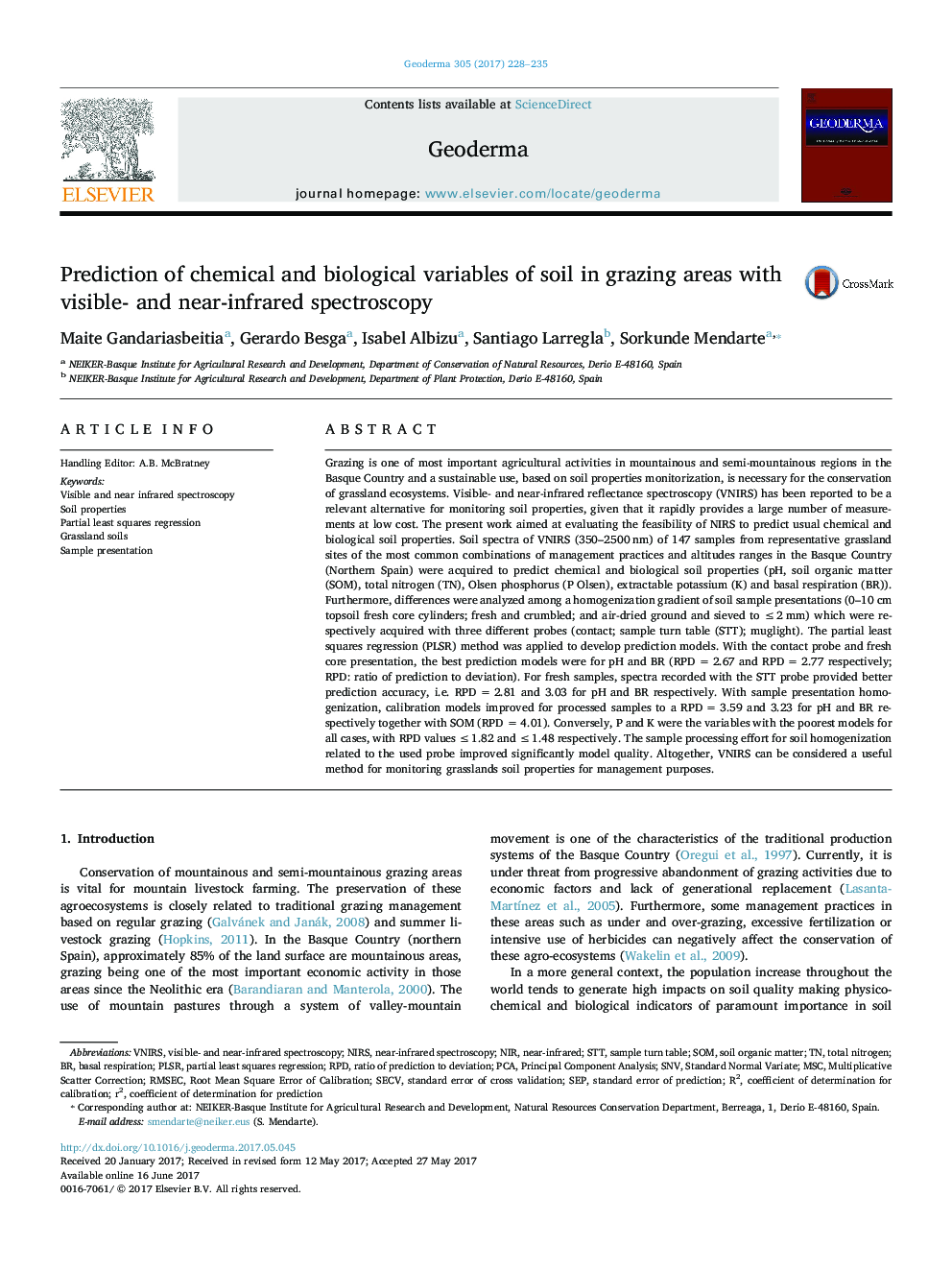| کد مقاله | کد نشریه | سال انتشار | مقاله انگلیسی | نسخه تمام متن |
|---|---|---|---|---|
| 5770292 | 1629412 | 2017 | 8 صفحه PDF | دانلود رایگان |
- Knowledge of soil properties is crucial for grassland agroecosystems management.
- Different practices enable collecting soil variability in grassland agroecosystems.
- VNIRS models were performed with increasing sample homogenization.
- Optimal equations were obtained, especially, for pH and BR in fresh samples.
- VNIRS has proved to predict well and rapidly soil pH, SOM, TN and BR.
Grazing is one of most important agricultural activities in mountainous and semi-mountainous regions in the Basque Country and a sustainable use, based on soil properties monitorization, is necessary for the conservation of grassland ecosystems. Visible- and near-infrared reflectance spectroscopy (VNIRS) has been reported to be a relevant alternative for monitoring soil properties, given that it rapidly provides a large number of measurements at low cost. The present work aimed at evaluating the feasibility of NIRS to predict usual chemical and biological soil properties. Soil spectra of VNIRS (350-2500 nm) of 147 samples from representative grassland sites of the most common combinations of management practices and altitudes ranges in the Basque Country (Northern Spain) were acquired to predict chemical and biological soil properties (pH, soil organic matter (SOM), total nitrogen (TN), Olsen phosphorus (P Olsen), extractable potassium (K) and basal respiration (BR)). Furthermore, differences were analyzed among a homogenization gradient of soil sample presentations (0-10 cm topsoil fresh core cylinders; fresh and crumbled; and air-dried ground and sieved to â¤Â 2 mm) which were respectively acquired with three different probes (contact; sample turn table (STT); muglight). The partial least squares regression (PLSR) method was applied to develop prediction models. With the contact probe and fresh core presentation, the best prediction models were for pH and BR (RPD = 2.67 and RPD = 2.77 respectively; RPD: ratio of prediction to deviation). For fresh samples, spectra recorded with the STT probe provided better prediction accuracy, i.e. RPD = 2.81 and 3.03 for pH and BR respectively. With sample presentation homogenization, calibration models improved for processed samples to a RPD = 3.59 and 3.23 for pH and BR respectively together with SOM (RPD = 4.01). Conversely, P and K were the variables with the poorest models for all cases, with RPD values â¤Â 1.82 and â¤Â 1.48 respectively. The sample processing effort for soil homogenization related to the used probe improved significantly model quality. Altogether, VNIRS can be considered a useful method for monitoring grasslands soil properties for management purposes.
368
Journal: Geoderma - Volume 305, 1 November 2017, Pages 228-235
